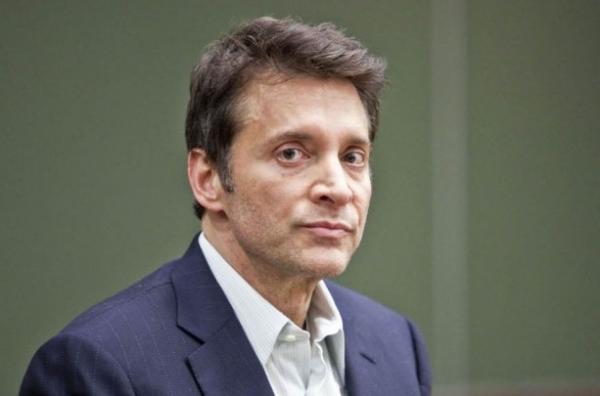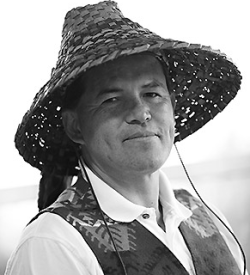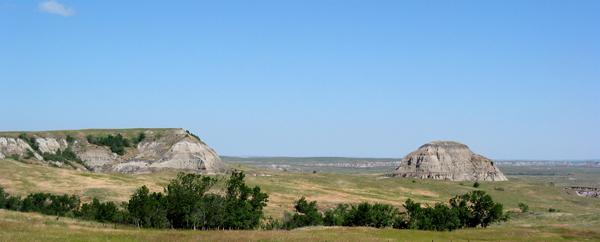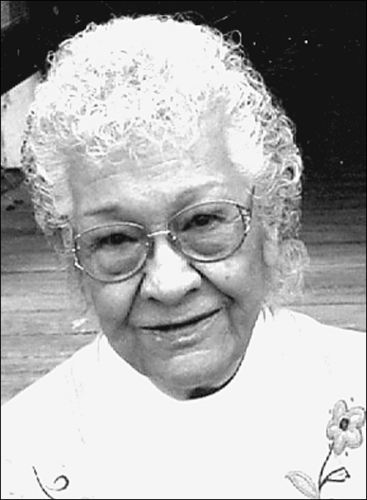Month: October 2013
Native History: A Non-Traditional Sweat Leads to Tragedy

James Arthur Ray at his bond hearing in Camp Verde, Arizona on February 23, 2010.
Source: Indian Country Today Media Network
This Date in Native History: The often misguided and misrepresented spiritual representation of traditional Native practices broke into mainstream media on October 8, 2009 when James Arthur Ray, a 53-year-old “self-help guru,” saw tragedy strike his latest retreat.
Ray, a controversial spiritual leader, offered sweats in a sweat lodge to those willing to shell out almost copy0,000 for a week in Sedona, Arizona. Tragedy struck when three of the participants died, two in the lodge and one in a nearby hospital following a week in a coma.
Ray drew the ire of Indian country from the start as the ceremony he was selling bore little if any resemblance to an actual sweat lodge ceremony.
Indian Country Today Media Network West Coast Editor Valerie Taliman wrote an award-winning opinion piece where she stated, “It was a bastardized version of a sacred ceremony sold by a multimillionaire who charged people $9,695 a pop for his ‘Spiritual Warrior’ retreat in Sedona, Arizona.”
RELATED: Selling the Sacred
In June of 2011 Ray was found guilty of negligent homicide in the three deaths. The victims participated in the “Spiritual Warrior” retreat, where 18 people were hospitalized for burns, respiratory arrest, kidney failure, loss of consciousness and dehydration.
RELATED: James Arthur Ray Found Guilty of Negligent Homicide
Taliman was quoted by CNN following the tragedy as saying, “What right does Ray have to mimic, mangle, and manipulate Native ceremonies that have been carefully handed down among indigenous cultures over millennia? Ray does not own any rights to Native spirituality, because they are owned collectively by Indigenous Peoples and cannot be sold.”
Ray however is one of many who Taliman also referred to as a “huckster posing as the real thing” and was only found guilty of a crime when the loss of life occurred.
Following the guilty charge Ray was sentenced to two years in prison and ordered to pay $57,000 in restitution to the families of the victims—he was released from prison on parole on July 12 of this year.
RELATED: Self-Help Shamster Behind Sweat-Lodge Homicides Released From Prison
Read more at http://indiancountrytodaymedianetwork.com/2013/10/08/native-history-non-traditional-sweat-leads-tragedy-151634
Breaking the Cycle of Poverty and Crime in Indian Country
By Duane Champagne, ICTMN
Poverty is a root cause of crime, and without solving the poverty issue it may not be possible to solve the violent crime issues plaguing Indian reservations. Where there are high rates of poverty, so there are high rates of crime. The official poverty rate for individual Indians in the United States on reservations is 29.4 percent, compared to the U.S. national average of 15.3 percent. The reservation poverty rate for Indian families on reservations is 36 percent, compared to the national average of 9.2 percent. Urban Indians have a poverty rate of 22 percent, which is better than reservation poverty rates. Some of the worst poverty rates are on reservations in the states of Washington, California, Wisconsin, Michigan, North Dakota, South Dakota, Arizona and New Mexico, where poverty rates often are higher than 60 percent.
Poverty is associated with low income, high unemployment, poor health, substandard housing, lack of market opportunities, and low educational achievement. Cycles of poverty are extremely difficult to break and tend to last over generations.
Poverty is closely related to social distress. Impoverished persons are more likely to be engaged in underground economy, use drugs and alcohol, which, in turn are highly associatied with violent crimes, domestic violence, and high crime rates.
In 2009, rapes in Indian country outpaced the total in Detroit, which is one of the most violent cities in the United States. Violent crime in Indian country increased during the 2000 to 2010 decade. Over the same decade, national violent crime rates fell, while Indian country violent crime rose by 29 percent.
Murder rates in Indian country increased 41 percent between 2000 and 2009. Nevertheless, federal funding for police and courts serving Indian country declined during the same period. While the decline in federal funding of public safety in Indian country may account for the rise in violent crimes, the funding decline does not account for the persistence of high rates of violent crime. More police, courts and jails will only partially address the fundamental issues of violence associated with poverty and social distress.
A recent study on high violent crime rates in U.S. cities points to the relations between poverty and violent crime. The 10 cities with the highest violent crime rates all had poverty rates over 20 percent, while the cities with the worst violent crime rates had poverty rates from 30 to 41 percent. On a per capita basis, cities provide more funds to police, courts, and jails than Indian reservations.
U.S. cities and counties also pride themselves on having better trained police, courts, and incarceration facilities. The two worse cities for violent crimes were Flint, Michigan, and Detroit, Michigan. Flint has a poverty rate of 40.3 percent and Detroit’s poverty rate is 40.9 percent. These statistics suggest that much of the violent crime on Indian reservations is highly associated with poverty, and increase funding of public safety, by itself, may not significantly curtail violent crime and improve public safety.
Indian reservations with poverty rates above 30 percent are particularly at risk. High rates of violent crime on reservations can be expected on reservations like Pine Ridge and San Carlos, which both have poverty rates over 50 percent. High rates of poverty combined with justice discrimination and cultural marginalization may account for higher rates of violent crime on Indian reservations than the rest of the nation. More investment in police, courts and public safety are necessary, but not sufficient for reducing crime and restoring healthy tribal communities.
More police and courts may help contain violent crimes, but do not address the root causes of crime. Solving the poverty issues in Indian country is only a partial solution. Federal Indian policies, and tribal governments need to meet the challenges of providing college education for tribal youth, achieve market sustainability, provide jobs to tribal members, restore individual health, improve housing, support cultural renewal, and reestablish the exercise the inherent powers of tribal governments. High crime rates are symptoms of deeper social and cultural distress, and there will be no solution to high rates of crime without solving the causes of distress.
Read more at http://indiancountrytodaymedianetwork.com/2013/10/06/breaking-cycle-poverty-and-crime-indian-country-151430
Tribe Prevails In Washington State Legal Battle for Water for Salmon

Source: Native News Network
SWINOMISH INDIAN RESERVATION – The Swinomish Indian Tribal Community learned Thursday that the Washington State Supreme Court ruled in the Tribe’s favor in a challenge to the Skagit River Instream Flow Rule amendments adopted in 2006 by the Washington Department of Ecology.
The Court’s October 3 decision concludes that Ecology department’s 2006 Skagit Rule amendments are invalid because they are inconsistent with Washington State’s laws to protect minimum instream flows for fish and other environmental values.
“This decision is a huge victory for Swinomish, for salmon, and for the water that salmon need to survive. Ecology had a choice to do the right thing or the wrong thing in 2006, and unfortunately, it chose to do the wrong thing. The Court’s decision vindicates the Tribe’s position and confirms that Ecology cannot make an ‘end run’ around laws that protect instream flows for fish,”
said Swinomish Tribal Chairman Brian Cladoosby.
The 2006 Rule amendments radically changed Ecology department’s original rule, which was adopted in 2001. The 2001 Skagit Instream Flow Rule established minimum instream flow levels for the Skagit River and several important tributaries.
“We spent years collaborating on what became the 2001 Rule with the City of Anacortes, the Public Utility District, Skagit County, Upper Skagit and Sauk-Suiattle Tribes and the State of Washington. The result of those efforts was a good rule based on sound science. Our collective agreement provided certainty for agriculture, for the Cities, for the County and for the Tribes for decades to come,”
Cladoosby continued.
In 2004, Skagit County sued Ecology department challenging the 2001 Rule. Multiparty discussions ensued as the Swinomish and other tribes, water purveyors, and the State tried to resolve the County’s complaints. Eventually, Ecology and the County settled the County’s lawsuit without consulting any of the other parties to the negotiation. In return for Skagit County agreeing to drop its lawsuit, Ecology department agreed to adopt the 2006 Rule Amendments.
The 2006 Rule amendments created 27 “reservations” of water for future out-of-stream use for a wide variety of purposes despite the fact that the senior minimum instream flow right established in 2001 is frequently unmet.
In 2008, the Tribe and the City of Anacortes (the “City”) filed a lawsuit challenging the 2006 Rule amendments. The Tribe and City contended that Ecology’s decision to create the reservations exceeded Ecology department’s authority.
Today, the Washington State Supreme Court agreed that:
“Ecology’s Amended Rule, which made 27 reservations of water for out-of-stream year-round non-interruptible beneficial uses in the Skagit River basin and which would impair minimum flows set by administrative rule, exceeded Ecology’s authority because it is inconsistent with the plain language of the statute and is inconsistent with the entire statutory scheme. The Amended Rule is invalid.”
“We would have preferred to work together to find a solution to everyone’s water needs as we did prior to the original 2001 Rule,”
observed Cladoosby,
“but, Ecology chose to go it alone with the County and we were left without any option other than calling the problems with the 2006 Rule amendments to the attention of a court. If we had not acted, the stream flows needed to support our diminishing salmon stocks would have been further impacted.”
The Swinomish Indian Tribal Community is a federally recognized Indian Tribe with approximately 900 members. Swinomish is a signatory to the 1855 Treaty of Point Elliott, which guarantees the Tribe’s treaty fishing rights. Its 10,000 acre reservation is located 65 miles North of Seattle, Washington on Fidalgo Island and includes approximately 3,000 acres of tidelands.
Obama Announces Fifth White House Tribal Nations Conference
Source: ICTMN
President Barack Obama recently announced the fifth White House Tribal Nations Conference this year will be held November 13 at the Department of Interior.
President Obama will host the conference that will give leaders from 566 federally recognized tribes the opportunity to interact directly with the president and members of the White House Council on Native American Affairs.
A representative from each of the 566 tribes will be invited to share their concerns and help improve the government-to-government relationship.
More details will be released at a later date.
Read more at http://indiancountrytodaymedianetwork.com/2013/10/05/obama-announces-fifth-white-house-tribal-nations-conference-151596
Obama Says Redskins Should Think Seriously About Changing Name
Source: Indian Country Today Media Network
In an interview with the Associated Press, President Obama said that if he were Dan Snyder, owner of the Washington D.C. NFL franchise, he would consider changing the football team’s name.
“If I were the owner of a team and I knew that there was a name of my team–even if it had a storied history–that was offending a sizeable group of people, I’d think about changing it,” Obama said to the AP.
Snyder, the Redskins owner, has said that he would never change the team’s name, but has been urged by Native American leaders, media outlets and U.S. lawmakers to change it. This is the first time that the president has publicly weighed in on the name-change debate.
Last month, NFL Commissioner Roger Goodell, who previously agreed with Snyder, shifted his stance on the issue slightly, saying that those who are offended by the name should be considered. “All these mascots and team names related to Native Americans, Native Americans feel pretty strongly about it,” Obama told the AP. “And I don’t know whether our attachment to a particular name should override the real legitimate concerns that people have about these things.”
U.S. colleges and universities have changed mascot names that were offensive to Native Americans. According to the AP, St. John University changed its name from the Redmen to the Red Storm, Marquette is the Golden Eagles instead of the Warriors and Stanford University was the Indians, now they’re the Cardinals.
Obama also said he understands that fans have a long-standing attachment to their team and they don’t “mean offense” by supporting them. “I don’t want to detract from the wonderful Redskins fans that are here. They love their team and rightly so.”
NFL owners are meeting in Washington on Monday for their fall meetings and a protest against the team name is planned.
RELATED Opponents of Racist D.C. Mascot to Hold Event at NFL Fall Meeting
“The President has heard and given voice to the major national Native organizations, parents, educators and students who have long called for an end to race-based stereotypes in sports,”said Suzan Shown Harjo, a Native American policy advocate who is the lead plaintiff in the trademark challenge to the Washington Redskins name.”These public slurs — even when used by enthusiastic fans who have no ill intent — cause harm and injury to our young people and can no longer be tolerated in polite society.”
Obama said he doesn’t have a direct stake in the Redskins name debate because he is not a team owner, according to USAToday.com. But he hinted that it was an interest of his.
“Maybe after I leave the presidency,” Obama said. “I think it would be a lot of fun.”
Read more at http://indiancountrytodaymedianetwork.com/2013/10/05/obama-says-redskins-should-think-seriously-about-changing-name-151619
Standing Rock Sioux Move to Rescue Children, Accuse South Dakota of Genocide

A view of Standing Rock Sioux Tribe’s reservation outside the capital in Fort Yates, North Dakota.
Indian Country Today Media Network
10/3/13
Citing the 1987 Proxmire Act, which enables the United States to prosecute acts of genocide, the Standing Rock Sioux Tribe has asked the federal government to file suit against the state of South Dakota for crimes against tribal children. The tribe’s homeland is in the prairies and badlands of North and South Dakota; one of its most revered leaders was Sitting Bull, who is said to have prayed Native forces to victory at the Battle of the Little Bighorn.
Standing Rock’s tribal council urged the United States to take action in a September 17 resolution claiming that South Dakota has been taking its children into care and adopting them out of the tribe illegally, in violation of the Indian Child Welfare Act. The resolution was passed the day after a child-welfare advocate informed the council that a young tribal member whom the state’s Department of Social Services (DSS) had placed with a white adoptive couple was homeless on the streets of Aberdeen, South Dakota.
The advocate, Shirley Schwab, recalled tracking down the 18-year-old. “When she came into the Burger King where we’d agreed to meet, I saw that her life had been reduced to what she could fit into a small blue duffel bag. No driver’s license, no money, no cell phone, little more than the clothes on her back.”
“When she turned 18, she exercised her right to live on her own,” said the teen’s adoptive mother, Wendy Larson Mette. “As far as I knew, she was living with friends, going to school.”
Schwab said a fellow Aberdeen resident had contacted her about the teen’s plight because of Schwab’s prior knowledge of the girl. Public court records show that in 2010, the teen and her siblings reported that their adoptive father, Richard Mette, had sexually and physically abused them for more than a decade. A deputy state’s attorney initiated a law-enforcement investigation. Police visited Richard and Wendy Larson Mette’s house and found sex toys and stacks of pornographic magazines and videotapes in bedrooms and common areas. The children were moved to another home. Schwab became their court-appointed special advocate.
DSS appears to have been long aware that this was a problem household. As early as 2001, Richard and Wendy signed an agreement, now a court document, with DSS. In the agreement, the couple, who are divorced, promised DSS officials to lock up their pornography and stop “swatting, spanking, kicking and tickling” the foster children placed with them. DSS later allowed the couple to adopt most of the children.
When asked if she believed her children had been sexually abused, Larson Mette said, “I fully believe and support my children in this accusation.” She said she found her ex-husband’s treatment of the children “horrifying,” but said that over the years, she had never noticed any indications of the sexual abuse, including related injuries or behavioral changes: “What are perceived to be the obvious signs were not there. They had great attendance in school.”
Larson Mette called the 2010 police report accurate in terms of “room location or quantity” of pornography, but claimed that over the years she had personally seen only some of the material.
Court records and local media reports show that South Dakota cut a deal with the father, who is now serving the relatively light sentence of 15 years for child rape. The state dropped cruelty charges against Larson Mette, and despite allegations that she had tolerated the sexual abuse, returned the children to her.
The state then undertook to discredit publicly the children and their advocates. This included a retaliatory prosecution of Schwab and the deputy state’s attorney, who were fully acquitted at trial. Court documents and sworn testimony show state criminal investigators took the teen and her younger siblings to a basement interrogation room in order to get them to recant the abuse claims. The children were interrogated individually, without an adult present on their behalf. They wept and said they were frightened, but none recanted.
“When I met the 18-year-old and saw what her life had become after such trauma, I was devastated,” said Schwab. “I could hardly breathe.”
Within a few days of Schwab contacting Standing Rock, the tribe had flown the teen to safety with tribal kin out of state. “Our chairman said, ‘She’s our relative, get the plane ticket now,’” recalled tribal councilwoman Phyllis Young, who added that adoptive and foster parents have been known to turn children away after they turn 18 and government subsidies end.
Young said that three Standing Rock children remain in the Larson Mette home, and the tribe is very concerned about their safety; as a result, it will sue for custody. The councilwoman noted that in recent years Standing Rock children have been victims in notorious and widely reported South Dakota cases involving sexual abuse by white adoptive fathers, all of whom are serving time.
“If they file, I will do whatever is necessary,” said Larson Mette. “My children are happy. I love them, they love me. We are trying desperately to put our lives back together and move forward.” She called that a “fair” representation of their situation.
In addition to moving to protect young tribal members, Standing Rock has requested that the South and North Dakota Congressional delegations hold hearings on Indian child welfare. The tribe has also contacted the United Nations about submitting material for the United States’ upcoming human-rights review.
Importantly, the tribe is working with the federal government to develop its own child-welfare infrastructure. This will help solve a problem that tribes and Indian-child-welfare advocates have long decried—South Dakota’s habit of taking Native children into custody and placing them in white households and white-run group homes, thereby undermining tribal culture and sovereignty. The Oglala and Rosebud Sioux tribes and the American Civil Liberties Union recently sued the state in a related matter.
“This all epitomizes the state of South Dakota’s total disregard for Native children,” said Schwab.
Neither South Dakota’s attorney general nor DSS director replied to requests for comments on any of these matters.
“The language of the Standing Rock tribal council resolution is both specific and global,” said Young. “We act on behalf of this teen and her siblings, and for all Native children who have been taken from their tribal communities.” The Proxmire Act includes reparations, she said, and the tribe wants the children’s reparations to include lifelong therapy for the abuse they have suffered.
“What is happening to our children is like war crimes,” Young continued. “We heard terrible things at hearings we just held at Standing Rock. Over the years, many Indian women have asked me to help get their children back. Some of our children the state has in its custody right now are Sitting Bull descendents. This has historic dimensions. We at Standing Rock are taking this to the limit.”
RELATED: South Dakota Sex-Abuse Perjury Case Collapses
RELATED: South Dakota Tribes Charge State With ICWA Violations
Chickasaw Woman to Cheer On NBA Pros as Thunder Girl

TheAdaNews.com
Katie Callaway, of Oklahoma City, during her audition for the NBA’s Oklahoma City Thunder Girls
A Chickasaw woman’s dream has come true. And she’ll get to share it with thousands.
Katie Callaway will cheer on basketball pros and fans as a member of the NBA’s Oklahoma City Thunder’s dance team.
“I am so excited,” Callaway said in a news release. “I can’t wait to get on those sidelines and entertain the best fans of any city with an NBA team.”
Callaway, 26, sat in the stands as a fan for six years before she decided to try out. But, she didn’t make the team on her first try.
“I worked hard, very hard, to improve my technique,” Callaway said reflecting on the failed effort. “I worked on leaps, turns, and pointed toes. It was a full-on effort for a year. It was tough.”
The final audition process consisted of three rounds: a choreographed routine, a question and answer session, and a solo dance. Only 38 women were selected as finalists from nearly 100 hopefuls. The group of 38 was eventually narrowed down to 20.
She auditioned at the Riverwind Casino in Norman, Oklahoma in front of a packed house. Now that she’s one of the 20 Thunder Girls, Callaway is looking forward to the team’s first game in November.
“I wondered what it would be like to be down there. I wondered how exciting it was for the team and how much they looked forward to it,” she said in the news release.
Callaway is an Oklahoma resident. She attended Ada High School where she was a cheerleader, but she was born in England where her father was stationed in the U.S. Air Force. Her mother is Chickasaw and works for the Chickasaw Nation. For years, her grandfather, Jack Wells, served as a Chickasaw tribal legislator and her great-grandmother, Delta Wells, was an original enrollee with the tribe.
“We’d go to festivals and I was a member of the Governor’s Honor Club,” Callaway said. “I learned my heritage is important and tradition is important. It is essential to know one’s self. I am very proud of my Chickasaw heritage.
But, Callaway won’t quit her day job. She’s a drilling engineer technician with Chesapeake Energy where she analyzes drilling for natural resources. She started working there as a receptionist and moved up rather quickly. Callaway is also a graduate of the University of Central Oklahoma in Edmond where she studied public relations.
Not only is she excited about cheering on the fans, but as a Thunder girl, Callaway will also have a chance to work with her community. “Being a part of the organization will give me that opportunity to give back, which is something I’m looking forward to very much.”
Read more at http://indiancountrytodaymedianetwork.com/2013/10/02/chickasaw-woman-cheer-nba-pros-thunder-girl-151566
Fukushima Nuclear Plant Reports Another Radioactive Water Leak
By MARI YAMAGUCHI
Oct 3, 2013
TOKYO — TOKYO (AP) — Another day, another radioactive-water spill. The operator of the meltdown-plagued Fukushima Dai-ichi nuclear plant says at least 430 liters (110 gallons) spilled when workers overfilled a storage tank that lacked a gauge that could have warned them of the danger.
The amount is tiny compared to the untold thousands of tons of radioactive water that have leaked, much of it into the Pacific Ocean, since a massive earthquake and tsunami wrecked the plant in 2011. But the error is one of many the operator has committed as it struggles to manage a seemingly endless, tainted flow.
Plant operator Tokyo Electric Power Co. said Thursday workers detected the water spilling from the top of one large tank when they were patrolling the site the night before. The tank is one of about 1,000 erected on the grounds around the plant to hold water used to cool the melted nuclear fuel in the broken reactors.
TEPCO said the water spilled out of a concrete barrier surrounding the tank and believed that most of it reached the sea via a ditch next to the river.
The new leak is sure to add to public concern and criticism of TEPCO and the government for their handling of the nuclear crisis. In August, the utility reported a 300-ton leak from another storage tank, one of a string of leaks in recent months.
That came after the utility acknowledged that contaminated groundwater was seeping into ocean at a rate of 300 tons a day.
TEPCO spokesman Masayuki Ono told an urgent news conference Thursday that the overflow occurred at a tank without a water gauge and standing on an unlevel ground, slightly tilting toward the sea. The tank was already nearly full, but workers pumped in more contaminated water into it to maximize capacity as the plant was facing storage crunch.
Experts have faulted TEPCO for sloppiness in its handling of the water management, including insufficient tank inspection records, lack of water gauges, as well as connecting hoses lying directly on the grass-covered ground. Until recently, only one worker was assigned to 500 tanks in a two-hour patrol.
In recent meetings, regulators criticized TEPCO for even lacking basic skills to properly measure radioactivity in contaminated areas, and taking too long to find causes in case of problems. They also have criticized the one-foot (30-centimeter) high protective barriers around the tanks as being too low.
The government has said it will spend $470 billion to build an underground “ice wall” around the reactor and turbine buildings to block groundwater inflows and prevent potential leaks from spreading. It is also funding more advanced water treatment equipment to make the contaminated water clean enough to be eventually released into the sea.
Oneida Indian Nation plans symposium on ‘Washington Redskins’ name at NFL meeting hotel
In its latest effort to get the Washington Redskins to change their name, the Oneida Indian Nation of upstate New York will hold a symposium at the same hotel where NFL will meet Monday.
NEWS WIRE SERVICES
October 4, 2013
The Oneida Indian Nation says the Washington Redskins’s name is a racial epithet.
The Oneida Indian Nation of upstate New York said Thursday it will take an in-your-face approach in its ongoing battle to get the Washington Redskins to change the team’s name.
The tribe, which says the name is a racial epithet, will host a symposium on the topic Monday at the same Washington hotel where the National Football League is holding its fall meeting, beginning the next day.










